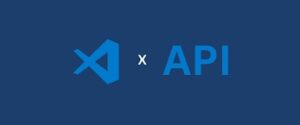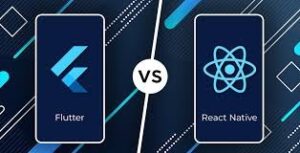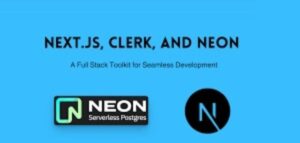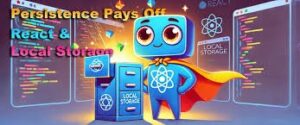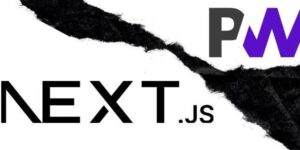
In the rapidly evolving world of mobile app development, two names often come up in discussions: Flutter and React Native. Both are powerful tools for building cross-platform apps, and each has its unique advantages and disadvantages. In this article, we’ll dive deep into the comparison between Flutter and React Native, providing you with all the information you need to make an informed decision for your next project. Let’s get started! 🚀
Table of Contents
- Introduction to Cross-Platform Development
- Overview of Flutter
- Overview of React Native
- Performance Comparison
- Development Experience
- User Interface and Customization
- Community and Ecosystem
- Code Sharing and Reusability
- Learning Curve
- Pros and Cons
- Use Cases and Popular Apps
- Conclusion
1. Introduction to Cross-Platform Development
What is Cross-Platform Development?
Cross-platform development refers to the practice of creating applications that can run on multiple operating systems using a single codebase. This approach offers several benefits, including reduced development time, cost savings, and consistent user experience across different platforms.
Why Choose Cross-Platform Development?
- Cost Efficiency: Develop once, deploy everywhere.
- Faster Time to Market: Speed up the development process by sharing code between platforms.
- Consistency: Ensure a uniform look and feel across devices.
- Maintenance: Easier to manage and update a single codebase.
With these benefits in mind, let’s dive into two of the most popular cross-platform frameworks: Flutter and React Native.
2. Overview of Flutter
What is Flutter?
Flutter is an open-source UI software development kit (SDK) created by Google. It allows developers to build natively compiled applications for mobile, web, and desktop from a single codebase. Flutter was first released in May 2017 and has since gained significant popularity.
Key Features of Flutter
- Hot Reload: Quickly see changes in the code without restarting the app.
- Widget-Based Architecture: Everything in Flutter is a widget, providing a high level of customization.
- Rich Set of Pre-Built Widgets: Comes with a comprehensive collection of material design and Cupertino widgets.
- Dart Language: Uses Dart, a language optimized for fast apps on any platform.
Sample Flutter Code
Here’s a simple Flutter app that displays a “Hello, World!” message:
import 'package:flutter/material.dart';
void main() => runApp(MyApp());
class MyApp extends StatelessWidget {
@override
Widget build(BuildContext context) {
return MaterialApp(
home: Scaffold(
appBar: AppBar(title: Text('Flutter Demo')),
body: Center(child: Text('Hello, World!')),
),
);
}
}3. Overview of React Native
What is React Native?
React Native is an open-source mobile application framework created by Facebook. It allows developers to build mobile apps using JavaScript and React. React Native was released in March 2015 and has a strong developer community and ecosystem.
Key Features of React Native
- Live and Hot Reloading: See changes instantly while preserving the state of the app.
- JavaScript and React: Leverages the power of JavaScript and React, making it easy for web developers to transition to mobile development.
- Reusable Components: Create components that can be reused across different parts of the app.
- Third-Party Libraries: Extensive range of third-party libraries and tools to extend functionality.
Sample React Native Code
Here’s a simple React Native app that displays a “Hello, World!” message:
import React from 'react';
import { Text, View } from 'react-native';
const App = () => {
return (
<View style={{ flex: 1, justifyContent: 'center', alignItems: 'center' }}>
<Text>Hello, World!</Text>
</View>
);
};
export default App;4. Performance Comparison
Flutter Performance
Flutter boasts impressive performance due to its compiled nature. It uses the Dart language, which is compiled to native ARM code for both iOS and Android. This ensures high performance and smooth animations. Additionally, Flutter’s widget-based architecture allows for fine-tuned control over every pixel on the screen.
React Native Performance
React Native, on the other hand, uses JavaScript to run the app logic and bridges it to native code. While this can lead to performance bottlenecks, especially for complex animations and heavy computational tasks, React Native’s performance is generally sufficient for most applications. The use of native modules can help optimize performance-critical parts of the app.
Benchmarking Performance
In general, Flutter tends to have an edge in performance, especially in apps that require heavy graphical computations. However, the difference may not be significant for simpler applications.
5. Development Experience
Flutter Development Experience
Flutter offers a robust and enjoyable development experience with features like hot reload, which allows developers to see the results of their changes almost instantly. The extensive set of pre-built widgets and the flexibility to create custom widgets make UI development a breeze.
React Native Development Experience
React Native also provides a pleasant development experience with live and hot reloading. Its component-based architecture and use of JavaScript and React make it familiar to web developers. The ecosystem is rich with third-party libraries that can speed up development.
Developer Tools
Both Flutter and React Native come with powerful developer tools. Flutter’s flutter command-line tool and Dart DevTools provide extensive debugging and profiling capabilities. React Native integrates seamlessly with tools like React DevTools and Redux DevTools for state management.
6. User Interface and Customization
Flutter UI and Customization
Flutter’s approach to UI is highly flexible, thanks to its widget-based architecture. Every element on the screen is a widget, from buttons to complex layouts. This allows for a high degree of customization and consistency across platforms. Flutter also includes a rich set of pre-designed widgets that follow Material Design and Cupertino (iOS-style) guidelines.
React Native UI and Customization
React Native leverages native components, ensuring that the app looks and feels like a native application. It uses a combination of JavaScript and native modules to create UI components. While this approach ensures a native look and feel, it may require more effort to achieve consistent design across platforms. React Native also supports third-party libraries like NativeBase and React Native Elements to aid in UI development.
Custom Animations
Both frameworks support custom animations. Flutter’s animation library is robust and provides a wide range of pre-built animations. React Native uses the Animated API, which, while powerful, may require more boilerplate code.
7. Community and Ecosystem
Flutter Community and Ecosystem
Flutter has a rapidly growing community and a rich ecosystem of packages and plugins. The official Flutter package repository, pub.dev, hosts thousands of packages that extend Flutter’s functionality. Google’s backing also ensures regular updates and long-term support.
React Native Community and Ecosystem
React Native boasts a mature and well-established community. The npm registry is filled with numerous libraries and plugins specifically designed for React Native. Facebook’s support and the extensive use of React Native in popular apps contribute to its strong ecosystem.
Community Support
Both frameworks have active communities that contribute to open-source projects, offer tutorials, and provide support on forums like Stack Overflow and GitHub.
8. Code Sharing and Reusability
Code Sharing in Flutter
Flutter allows for a high degree of code sharing between platforms. Since Flutter compiles to native code, the same codebase can be used for iOS, Android, web, and desktop applications with minimal modifications.
Code Sharing in React Native
React Native also promotes code sharing, especially between iOS and Android. However, achieving true cross-platform consistency may require additional effort due to platform-specific customizations. React Native for Web extends the framework’s reach to web applications, but this may require more substantial changes to the codebase.
Example of Code Reusability
Here’s an example demonstrating code reusability in Flutter:
import 'package:flutter/material.dart';
class CustomButton extends StatelessWidget {
final String label;
final VoidCallback onPressed;
CustomButton({required this.label, required this.onPressed});
@override
Widget build(BuildContext context) {
return ElevatedButton(
onPressed: onPressed,
child: Text(label),
);
}
}
// Usage in both iOS and Android:
CustomButton(label: 'Click Me', onPressed: () => print('Button Pressed'));And in React Native:
import React from 'react';
import { Button, StyleSheet, View } from 'react-native';
const CustomButton = ({ label, onPress }) => {
return <Button title={label} onPress={onPress} />;
};
// Usage in both iOS and Android:
<CustomButton label="Click Me" onPress={() => console.log('Button Pressed')} />;9. Learning Curve
Learning Curve for Flutter
Flutter’s learning curve can be steep for beginners, especially those who are not familiar with Dart. However, Google provides extensive documentation, tutorials, and resources to help developers get up to speed quickly. Once you grasp the core concepts of widgets and state management, Flutter becomes a powerful and intuitive tool.
Learning Curve for React Native
React Native has a gentler learning curve for developers with a background in JavaScript and React. The familiarity with JavaScript and the component-based architecture makes it easier for web developers to transition to mobile development. Facebook’s comprehensive documentation and the wealth of community resources further simplify the learning process.
10. Pros and Cons
Pros and Cons of Flutter
Pros:
- High performance due to native compilation.
- Rich set of pre-designed widgets.
- Consistent look and feel across platforms.
- Strong support from Google.
- Single codebase for mobile, web, and desktop.
Cons:
- Learning curve for Dart.
- Larger app size.
- Limited third-party libraries compared to React Native.
Pros and Cons of React Native
Pros:
- Familiarity with JavaScript and React.
- Strong community and ecosystem.
- Native look and feel.
- Extensive third-party libraries.
- Live and hot reloading.
Cons:
- Performance bottlenecks in complex apps.
- Requires native modules for optimal performance.
- Potential inconsistency across platforms.
11. Use Cases and Popular Apps
Use Cases for Flutter
Flutter is ideal for apps that require a high degree of customization, smooth animations, and consistent performance across platforms. It’s also a great choice for MVPs and startups looking to develop apps quickly.
Popular Apps Built with Flutter:
- Google Ads
- Alibaba
- Reflectly
- Hamilton Musical
Use Cases for React Native
React Native is well-suited for apps that benefit from a native look and feel, require rapid development, and have a strong reliance on third-party libraries.
Popular Apps Built with React Native:
- Airbnb
- Tesla
12. Conclusion
Choosing between Flutter and React Native depends on your project requirements, team expertise, and long-term goals. Here’s a quick recap to help you decide:
- Choose Flutter if:
- You need high performance and smooth animations.
- You want a consistent look across platforms.
- You are comfortable learning Dart.
- You are targeting multiple platforms beyond mobile.
- Choose React Native if:
- You prefer working with JavaScript and React.
- You need a native look and feel.
- You rely heavily on third-party libraries.
- You want a gentler learning curve.
Both Flutter and React Native are excellent choices for cross-platform development, each with its own strengths and trade-offs. By understanding the differences and evaluating your specific needs, you can make an informed decision that best suits your project. Happy coding! 🎉

